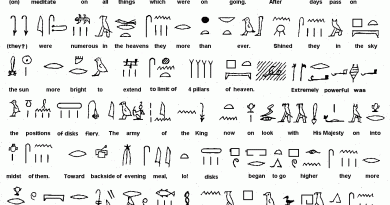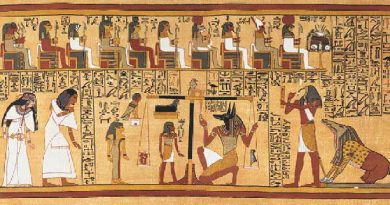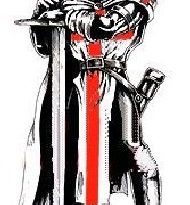Unexplained Mysteries of The Voynich manuscript
The Voynich manuscript is a mysterious, undeciphered illustrated book. It is thought to have been written in the 15th or 16th century. The author, script, and language of the manuscript remain unknown.
Over its recorded existence, the Voynich manuscript has been the object of intense study by many professional and amateur cryptographers, including some top American and British codebreakers of World War II fame (all of whom failed to decrypt any portion of the text).This string of failures has turned the Voynich manuscript into a famous subject of historical cryptology, but it has also given weight to the theory that the book is simply an elaborate hoaxa meaningless sequence of arbitrary symbols.
The book is named after the Polish-American book dealer Wilfrid M. Voynich, who acquired it in 1912. Currently the Voynich manuscript is stored in the Beinecke Rare Book and Manuscript Library of Yale University as item “MS 408”. The first facsimile edition was published in 2005.
By current estimates, the book originally had 272 pages in 17 quires of 16 pages each. About 240 vellum pages remain today, and gaps in the page numbering (which seems to be later than the text) indicate that several pages were already missing when Voynich acquired it. A quill pen was used for the text and figure outlines, and colored paint was applied (somewhat crudely) to the figures, possibly at a later date. There is strong evidence that at one point in time, the pages of the book were arranged in a different order.
The text was clearly written from left to right, with a slightly ragged right margin. Longer sections are broken into paragraphs, sometimes with “bullets” in the left margin. There is no obvious punctuation. The ductus flows smoothly, suggesting that the scribe understood what he was writing when it was written; the manuscript does not give the impression that each character had to be calculated before being inked onto the page.
The text consists of over 170,000 discrete glyphs, usually separated from each other by narrow gaps. Most of the glyphs are written with one or two simple pen strokes. While there is some dispute as to whether certain glyphs are distinct or not, an alphabet with 2030 glyphs would account for virtually all of the text; the exceptions are a few dozen rarer characters that occur only once or twice each.
Wider gaps divide the text into about 35,000 “words” of varying length. These seem to follow phonetic or orthographic laws of some sort; e.g., certain characters must appear in each word (like the vowels in English), some characters never follow others, and some may be doubled but others may not.
Statistical analysis of the text reveals patterns similar to those of natural languages. For instance, the word entropy (about 10 bits per word) is similar to that of English or Latin texts. Some words occur only in certain sections, or in only a few pages; others occur throughout the manuscript. There are very few repetitions among the thousand or so “labels” attached to the illustrations. In the herbal section, the first word on each page occurs only on that page and may be the name of the plant.
On the other hand, the Voynich manuscript’s “language” is quite unlike European languages in several aspects. Firstly, there are practically no words comprising more than ten glyphs, yet there are also few one- or two-letter words. The distribution of letters within the word is also rather peculiar: some characters only occur at the beginning of a word, some only at the end, and some always in the middle sectionan arrangement found in Semitic alphabets but not in the Latin or Cyrillic alphabets (with the exception of the Greek letters Beta and Sigma).
The text seems to be more repetitive than typical European languages; there are instances where the same common word appears up to three times in a row. Words that differ only by one letter also repeat with unusual frequency.
There are only a few words in the manuscript written in a seemingly Latin script. On the last page, there are four lines of writing that are written in (rather distorted) Latin letters, except for two words in the main script. The lettering resembles European alphabets of the 15th century, but the words do not seem to make sense in any language. Also, a series of diagrams in the “astronomical” section has the names of ten of the months (from March to December) written in Latin script, with spelling suggestive of the medieval languages of France or the Iberian Peninsula. However, it is not known whether these bits of Latin script were part of the original text or were added later.
The history of the manuscript is still full of gaps, especially in its earliest part. Since the manuscript’s alphabet does not resemble any known script, and the text is still undeciphered, the only useful evidence as to the book’s age and origin are the illustrationsespecially the dress and hairstyles of the human figures and a couple of castles that are seen in the diagrams. They are all characteristically European, and based on that evidence, most experts assign the book to dates between 1450 and 1520. This estimate is supported by other secondary clues.
The earliest confirmed owner of the Voynich manuscript was Georg Baresch, an obscure alchemist who lived in Prague in the early 17th century. Baresch apparently was just as puzzled as we are today about this “Sphynx” that had been “taking up space uselessly in his library” for many years. On learning that Athanasius Kircher, a Jesuit scholar from the Collegio Romano, had published a Coptic (Ethiopic) dictionary and “deciphered” the Egyptian hieroglyphs, Baresch sent a sample copy of the script to Kircher in Rome (twice), asking for clues. His 1639 letter to Kircher, which was recently located by Rene Zandbergen, is the earliest mention of the manuscript that has been found so far.
It is not known whether Kircher answered the request, but apparently, he was interested enough to try to acquire the book, which Baresch apparently refused to yield. Upon Baresch’s death, the manuscript passed to his friend Jan Marek Marci (Johannes Marcus Marci), then rector of Charles University in Prague, who promptly sent the book to Kircher, his longtime friend and correspondent. Marci’s cover letter (1666) is still attached to the manuscript.
Authorship
Many names have been proposed as possible authors of the Voynich manuscript.
Marci’s 1665 cover letter to Kircher says that, according to his late friend Raphael Mnishovsky, the book had once been bought by Rudolf II, Holy Roman Emperor and King of Bohemia (15521612), for 600 ducatsaround US$ 30,800 as of 2005. According to the letter, Rudolf believed the author to be the Franciscan friar and polymath Roger Bacon (12141294).
Even though Marci said that he was “suspending his judgment” about this claim, it was taken quite seriously by Voynich, who did his best to confirm it. His conviction strongly influenced most deciphering attempts for the next 80 years. However, scholars who have looked at the Voynich manuscript and are familiar with Bacon’s works have flatly denied that possibility.[citation needed] Mnishovsky died in 1644, and the deal must have occurred before Rudolf’s abdication in 1611at least 55 years before Marci’s letter.
The assumption that Roger Bacon was the author led Voynich to conclude that the person who sold the manuscript to Rudolf could only be John Dee, a mathematician and astrologer at the court of Queen Elizabeth I, known to have owned a large collection of Bacon’s manuscripts. This theory is also conveyed by Voynich manuscript scholar Gordon Rugg. Dee and his scrier (mediumic assistant) Edward Kelley lived in Bohemia for several years, where they had hoped to sell their services to the emperor. However, Dee’s meticulously kept diaries do not mention that sale and make it seem quite unlikely. If the Voynich manuscript author is not Bacon, the connection to Dee may just disappear. It is possible that Dee himself may have written it and spread the rumour that it was originally a work of Bacon’s in the hopes of later selling it.
Dee’s companion in Prague, Edward Kelley, was a self-styled alchemist who claimed to be able to turn copper into gold by means of a secret powder that he had dug out of a Bishop’s tomb in Wales. As Dee’s scrier, he claimed to be able to invoke angels through a shewstone and had long conversations with themwhich Dee dutifully noted down. The angel’s language was called Enochian, after Enoch, the Biblical father of Methuselah; according to legend, he had been taken on a tour of heaven by angels and had later written a book about what he saw there. Several people (see below) have suggested that, just as Kelley may have invented Enochian to dupe Dee[citation needed], he could have fabricated the Voynich manuscript to swindle the emperor (who was already paying Kelley for his supposed alchemical expertise).
Fabrication by Voynich
Others suspected Voynich of having fabricated the manuscript himself. As an antique-book dealer, he probably had the necessary knowledge and means, and a “lost book” by Roger Bacon would have been worth a fortune. However, by expert internal dating of the manuscript, and the recent discovery of Baresch’s letter to Kircher, many consider that possibility to have been eliminated.[10] Still, internal dating is often highly speculative and depends on many assumptions that may themselves be lacking in hard factual support. There has also been debate over what date the internal evidence suggests, with some scholars perceiving a more modern date. Further, Baresch’s letter (and Marci’s as well) only establish the existence of a manuscript, not that the Voynich manuscript is the same one spoken of there. In fact, their letters might even be taken as the motivation for Voynich to fabricate the manuscript (assuming he was aware of them), rather than as proofs authenticating it; but if a fabrication, the question arises as to why neither Voynich nor his widow ever attempted to sell it. Fame rather than fortune might be speculated as a motive, but that would not explain why Voynich’s widow never attempted to sell the manuscript after his death. All things considered, most who have studied the history of the manuscript do not believe that Voynich fabricated the document.
Language
There are many theories about the Voynich manuscript’s “language”. Here are some:
Ciphers
According to the “letter-based cipher” theory, the Voynich manuscript contains a meaningful text in some European language, that was intentionally rendered obscure by mapping it to the Voynich manuscript “alphabet” through a cipher of some sortan algorithm that operated on individual letters.
Micrography
Following its 1912 rediscovery, one of the earliest efforts to unlock the book’s secrets (and the first of many premature claims of decipherment) was made in 1921 by William Newbold of the University of Pennsylvania. His singular hypothesis held that the visible text is meaningless itself, but that each apparent “letter” is in fact constructed of a series of tiny markings only discernible under magnification. These markings were supposed to be based on ancient Greek shorthand, forming a second level of script that held the real content of the writing.
Steganography
This theory holds that the text of the Voynich manuscript is mostly meaningless, but contains meaningful information hidden in inconspicuous detailse.g. the second letter of every word, or the number of letters in each line. This technique, called steganography, is very old, and was described by Johannes Trithemius in 1499.
Exotic natural language
The linguist Jacques Guy once suggested that the Voynich manuscript text could be some exotic natural language, written in the plain with an invented alphabet. The word structure is indeed similar to that of many language families of East and Central Asia, mainly Sino-Tibetan (Chinese, Tibetan, and Burmese), Austroasiatic (Vietnamese, Khmer, etc.) and possibly Tai (Thai, Lao, etc.). In many of these languages, the “words” have only one syllable; and syllables have a rather rich structure, including tonal patterns.
Glossolalia
In their book, Kennedy and Churchill hint to the possibility that the Voynich manuscript may be a case of glossolalia, channeling or outsider art.
If this is true, then the author felt compelled to write large amounts of text in a manner which somehow resembles stream of consciousness, either due to voices heard, or due to his own urge. While in glossolalia this often takes place in an invented language (usually made up of fragments of the author’s own language), invented scripts for this purpose are rare.
Constructed language
The peculiar internal structure of Voynich manuscript “words” has led William F. Friedman and John Tiltman to arrive independently at the conjecture that the text could be a constructed language in the plainspecifically, a philosophical or a priori language. In languages of this class, the vocabulary is organized according to a category system, so that the general meaning of a word can be deduced from its sequence of letters.
Hoax
The bizarre features of the Voynich manuscript text (such as the doubled and tripled words), the suspicious contents of its illustrations (such as the chimeric plants) and its lack of historical reference support the idea that the manuscript is really a hoax. In other words, if no one is able to extract meaning from the book, perhaps this is because the document contains no meaningful content in the first place.
The argument for authenticity, on the other hand, is that the manuscript appears too sophisticated to be a hoax. While hoaxes of the period tended to be quite crude, the Voynich manuscript exhibits many subtle characteristics which only show up after careful statistical analysis. These fine touches require much more work than would have been necessary for a simple forgery, and some of the complexities are only visible with modern tools. The question then arises: why would the author employ such a complex and laborious forging algorithm in the creation of a simplistic hoax, if no one in the expected audience (that is, the creator’s contemporaries) could tell the difference?



